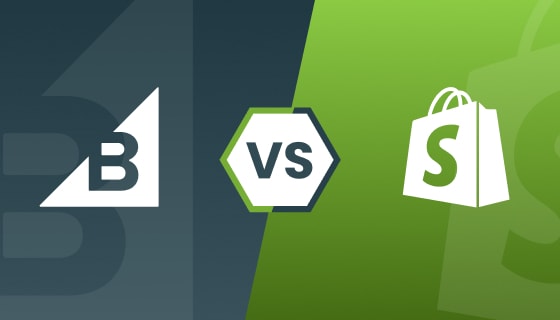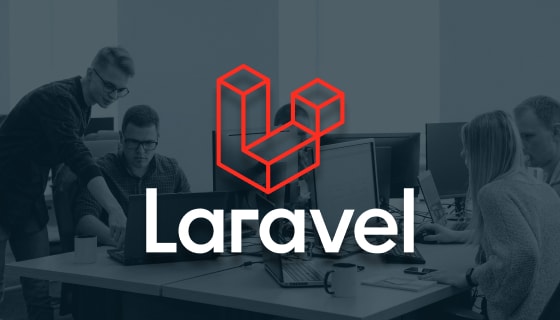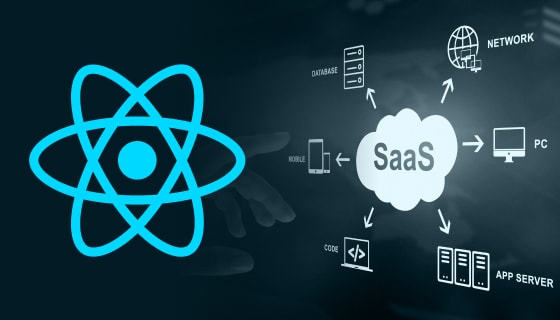Introduction
In today’s digital-driven world, choosing an ideal PHP development framework can make or break your business’s success. With countless options available, how do you ensure your next project meets both your technical and growth objectives?
Here’s a surprising fact: 47% of users expect a website to load within merely two seconds, and 40% abandon it if it takes more than three. A framework’s speed, growth potential, and features are pivotal in meeting such expectations and securing user trust.
Laravel and CodeIgniter—two powerhouse PHP frameworks—are revolutionizing web development, offering unmatched performance and resilience for contemporary companies.
But which one truly supports your goals? The answer lies in comprehending their distinctive strengths and limitations and how they align with your project’s needs.
This blog is curated for business owners, entrepreneurs, and decision-makers seeking clarity on selecting a suitable framework. We’ll explore the features, performance, and real-world applications of Laravel and CodeIgniter to guide you toward an informed decision.
Curious about which PHP framework can transform your next project? Let’s find the answer together!
Understanding Laravel And CodeIgniter Frameworks
Investing in the right development framework is essential for businesses striving to build flexible, efficient, and user-friendly applications. Laravel and CodeIgniter stand out as leading PHP frameworks with unique advantages for diverse projects, making selection between them critical for success.
The Importance Of Choosing The Right Framework For Business Growth
Imagine launching an eCommerce platform that needs to handle thousands of users seamlessly or a startup app requiring rapid deployment. Your chosen framework defines your application’s success, expandability, and user experience.
A robust framework ensures flawless development, minimizes errors, and supports future growth, which is crucial for succeeding in today’s competitive digital landscape.
Overview Of Laravel And CodeIgniter
Laravel’s modern architecture excels at tackling complex features like authentication and routing, making it practical for enterprise solutions. Its rich feature set facilitates tasks like database management and API integration.
CodeIgniter, with its simplicity and speed, is perfect for optimized, time-sensitive projects. Its lightweight framework and minimal configuration allow developers to deliver fast, well-organized solutions without compromising quality.
Why These Frameworks Are Popular Among Developers And Businesses
Both Laravel and CodeIgniter have gained traction for their developer-friendly features and business-oriented solutions:
Laravel: Offers extensive customization, a strong ecosystem, and tools for enterprise-grade applications. Its templating, middleware, and API support make it a go-to option for intricate projects.
CodeIgniter: Attracts developers with its ease of use, remarkable performance, and minimal resource requirements. Startups and small firms favor its quick setup for meeting tight deadlines.
Both PHP frameworks adapt exceptionally to modern trends like cloud-based applications and mobile-first strategies, ensuring organizations stay ahead in competitive markets.
Moreover, both frameworks empower organizations to meet their goals, making them invaluable tools for contemporary web development.
Key Takeaway: Choosing the right PHP framework—Laravel for robust and scalable solutions or CodeIgniter for simplicity and speed—can significantly impact your business growth and digital success.
What Is Laravel?
Brief Overview Of Laravel
Developed in 2011 by Taylor Otwell, Laravel has become a foremost PHP framework for building dynamic, secure, and elastic web applications, simplifying even the most complicated development tasks.
With built-in tools and extensive libraries, Laravel provides a robust foundation for crafting customized solutions tailored to diverse business needs.
Key Features And Strengths
MVC Architecture
Laravel follows the Model-View-Controller (MVC) design pattern, promoting clean and organized code. This separation of concerns ensures easier debugging, maintenance, and scalability, making it ideal for large projects.
Built-In Authentication And Security
Laravel offers ready-to-use authentication systems and cutting-edge security measures like CSRF protection and encryption. These features protect applications against common vulnerabilities like SQL injection and cross-site scripting.
Advanced Query Builder And Eloquent ORM
Laravel’s Eloquent ORM provides an intuitive way to interact with databases. Its query builder supports complicated operations while keeping code simple and readable, enabling developers to manage data systematically.
Popular Use Cases For Laravel In Business Applications
- eCommerce Platforms: For instance, Shopify utilizes Laravel to create customizable online stores with secure payment integrations and structured inventory management.
- Enterprise Applications: Its growth potential and robust features make it suitable for CRM systems, HR platforms, and other enterprise-level solutions.
- APIs And SaaS Platforms: Laravel’s support for REST APIs and seamless integration with microservices make it a top pick for developing SaaS applications.
Key Takeaway: Laravel’s combination of modern architecture, built-in security, and flexible database management position it as a premier framework for future-ready and innovative business applications.
What Is CodeIgniter?
Brief Overview Of CodeIgniter
Ever wondered if simplicity could meet power in web development? CodeIgniter, developed in 2006 by EllisLab, does exactly that—offering remarkable pace and convenience for making web applications.
Designed for developers who prefer minimal configuration, it enables rapid project setups without the intricacies of contemporary frameworks. Its small footprint, clear documentation, and usability make it an excellent choice for speedy, cost-effective development.
Key Features And Strengths
Lightweight Framework
CodeIgniter’s minimal size ensures swifter loading times and reduced server resource usage, making it impeccable for applications that require speed and simplicity.
Simple Setup And Minimal Configuration
Unlike frameworks that demand extensive setups, CodeIgniter offers a plug-and-play approach, allowing developers to start building immediately with minimal configuration.
Fast Performance And Small Footprint
Known for its blazing speed, CodeIgniter ensures optimal performance, even in shared hosting environments. Its small footprint contributes to more rapid execution and smooth deployment.
Popular Use Cases For CodeIgniter In Business Applications
- Small Business Websites: For example, startups often use CodeIgniter to create budget-friendly websites with swift deployment times, allowing them to launch their digital presence quickly.
- Content-Driven Platforms: Blogs, news portals, and other content-heavy platforms benefit from their top-notch performance and ease of management.
- Custom CRM Systems: CodeIgniter provides a lightweight framework for expeditious development for companies requiring straightforward yet effective customer relationship management tools.
Key Takeaway: CodeIgniter’s lightweight architecture, swift performance, and ease of use make it an excellent choice for businesses aiming for speed and simplicity without sacrificing functionality.
Technical Comparison: Laravel Vs. CodeIgniter
Architecture And Design Patterns
Laravel follows the Model-View-Controller (MVC) design pattern, providing a structured approach that separates business logic, user interface, and database operations. This makes applications more straightforward to manage, debug, and scale.
CodeIgniter adopts a more uncomplicated approach. While it supports MVC, it doesn’t enforce it, offering flexibility for developers who prefer minimal structure. This makes it superior for projects requiring quick setups and effortless workflows.
A framework’s architecture sets the foundation, but its performance determines how well it handles real-world challenges.
Performance
Laravel’s resource-intensive architecture may require state-of-the-art hosting environments to maintain performance when handling high-traffic scenarios. For instance, eCommerce platforms with heavy user interactions often lean on Laravel’s caching mechanisms to ensure stability, while smaller sites benefit from CodeIgniter’s rapid response times on shared servers.
CodeIgniter, with its lightweight nature, excels in speed and efficiency, making it perfect for applications hosted on shared servers or those requiring prompt response times. Its minimal resource requirements allow it to manage traffic spikes effectively.
While performance plays a critical role in ensuring smooth user experiences, ease of use determines how efficiently developers can work with a framework to deliver those experiences. Let’s explore how Laravel and CodeIgniter compare in terms of developer-friendliness.
Ease Of Use And Learning Curve
Laravel’s rich ecosystem suits experienced developers working on complex projects, while CodeIgniter’s simplicity appeals to beginners or teams working on quick, plain sailing solutions. Developers new to PHP frameworks find CodeIgniter’s plug-and-play setup and clear documentation invaluable.
On the other hand, Laravel’s cutting-edge functionalities, like Eloquent ORM and middleware, justify the steeper learning curve for intricate applications.
Beyond ease of use, the ability to scale is a decisive factor for companies planning long-term growth.
Scalability
Laravel shines in building scalable applications thanks to its modular architecture and support for APIs and microservices. It’s well-suited for organizations planning to expand their operations over time.
While reliable for lightweight projects, CodeIgniter may not provide the robustness required for dealing with large-scale, highly complex applications.
Key Takeaway: Laravel’s structured design, advanced features, and elasticity cater to demanding, long-term projects, while CodeIgniter’s simplicity and speed are ideal for lightweight, time-sensitive applications. Choose based on your project’s complexity and future growth needs.

Customization And Flexibility
Laravel’s Extensive Customization Capabilities
When it comes to customization, Laravel stands out with advanced tools and features that let developers craft unique, dynamic web applications with ease:
Blade Templating Engine
Laravel’s Blade engine simplifies the creation of dynamic layouts with reusable components. For example, Blade’s reusable components are ideal for creating eCommerce platforms with consistent, dynamic layouts across pages like product catalogs and checkout flows.
Middleware For Custom Logic
Laravel’s middleware allows developers to insert custom logic at different stages of request processing. This elasticity makes implementing unique authentication methods, data handling processes, or user-specific functionalities easy.
CodeIgniter’s Flexibility Without Enforcing Structure
CodeIgniter provides developers with the freedom to design applications without strict guidelines or predefined rules, making it an excellent choice for straightforward projects:
Custom Development Options Without Strict Rules
CodeIgniter’s non-restrictive approach lets developers structure applications based on their preferences. This adjustability is suitable for projects that require simple workflows or speedier prototyping.
While Laravel’s structured approach is practical for complicated applications requiring customization, CodeIgniter’s flexibility ensures developers can create lightweight, fast solutions tailored to simpler requirements.
Key Takeaway: Laravel offers powerful tools like Blade and middleware for highly customizable and future-ready applications, while CodeIgniter’s flexible, rule-free environment supports rapid development for straightforward projects. Make a selection based on your project’s intricacy and customization needs.
Ecosystem And Community Support
Laravel’s Ecosystem
Laravel Forge, Vapor, And Nova For Enhanced Development
Laravel’s ecosystem is a developer’s powerhouse. For instance, Forge automates server configuration, saving time for developers, while Vapor’s serverless deployment ensures scalability for evolving organizations. Nova facilitates admin data management with a user-friendly interface, enabling developers to focus on innovation.
Strong Community And Regular Updates
Laravel benefits from a thriving global community that actively contributes to its ecosystem. Regular updates ensure the framework evolves to meet contemporary development needs, keeping it secure, well-organized, and feature-rich.
CodeIgniter’s Ecosystem
Availability Of Plugins And Libraries
CodeIgniter supports a wide range of plugins and libraries, making it effortless for developers to add functionalities like form validation, email handling, and database access. This modularity allows expeditious customization without requiring extensive coding.
Support For Older PHP Versions
CodeIgniter’s compatibility with older PHP versions ensures seamless integration into legacy systems, making it a dependable option for businesses updating older applications without significant rewrites.
Community And Resources
Laravel’s Global Developer Community
Laravel’s expansive community includes forums, tutorials, and dedicated resources that simplify learning and problem-solving. Developers can find solutions to diverse challenges, ensuring systematic project execution.
CodeIgniter’s Longevity And Support Base
CodeIgniter has a longstanding history with an established support base that provides stability for developers and companies. Its simplicity makes it effortless for even small teams to contribute and maintain applications effectively.
Business Considerations
Development Costs
Laravel’s Higher Initial Costs For Advanced Features
For instance, an enterprise developing a CRM with Laravel may face higher upfront costs, but the framework’s robust features and reduced maintenance needs often lead to long-term savings.
CodeIgniter’s Cost-Effective Solutions For Simpler Applications
CodeIgniter’s lightweight framework and minimal resource requirements make it a cost-effective option for companies with tight budgets or straightforward application needs.
Time To Market
Laravel’s Features For Faster Development Of Complex Projects
Laravel’s pre-built tools, such as its Eloquent ORM and built-in authentication, optimize the development process, reducing time-to-market for feature-rich applications. This makes it superior for businesses seeking to launch enterprise-level solutions quickly.
CodeIgniter’s Speed In Setting Up And Deploying Lightweight Projects
CodeIgniter’s less complicated and minimal configuration allows developers to set up and deploy applications faster, making it the preferred option for lightweight, time-sensitive projects.
Maintenance And Updates
Long-Term Maintenance And Version Updates For Both Frameworks
Laravel offers frequent updates and a well-documented upgrade process, ensuring applications remain secure and aligned with the latest features. CodeIgniter also provides stability with its updates, though they may not be as frequent or feature-rich as Laravel’s.
Security
Built-In Security Features In Laravel
Laravel includes out-of-the-box security measures such as encryption, CSRF protection, and SQL injection prevention, making it a strong pick for applications with sensitive data.
Security Practices For CodeIgniter (Manual Implementations)
CodeIgniter’s manual implementation of security measures gives developers flexibility but can be time-consuming. For example, ensuring SQL injection protection requires custom coding, unlike Laravel’s built-in safeguards.
Key Takeaway: Laravel’s comprehensive features make it ideal for businesses with long-term goals and complex needs. CodeIgniter’s budget-friendly and fast solutions cater to smaller projects with limited resources or tighter timelines.
When To Choose Laravel
Businesses Needing Complex And Scalable Applications
Laravel’s modular architecture and state-of-the-art features make it the premier choice for companies tackling complex projects that require elasticity and precision.
Enterprises building CRMs, robust eCommerce platforms, or data-driven portals benefit from Laravel’s ability to integrate multiple functionalities seamlessly. For instance, Laravel’s queue system can handle high volumes of tasks in the background, ensuring optimal performance during peak usage.
Moreover, Laravel’s structured MVC architecture allows for streamlined development and maintenance, making it a dependable choice for applications expected to scale in traffic or features over time. This ensures that organizations are equipped to handle growth without compromising performance.
Use Cases Requiring Advanced Features (Authentication, APIs, CRMs)
Laravel facilitates the implementation of state-of-the-art features that are essential for many modern web applications. Its built-in authentication systems allow for secure user management, from login processes to role-based access control.
For example, a SaaS platform offering subscription-based services can use Laravel’s role-based access control to create tiered user permissions, ensuring secure and tailored experiences for different customer levels.
For companies reliant on APIs—such as SaaS providers or data-driven platforms—Laravel’s robust API development tools accelerate integration with external systems like payment gateways, CRMs, or marketing automation platforms.
The framework’s Eloquent ORM enhances database operations, enabling developers to manage complex queries efficiently while maintaining data integrity.
Companies With A Long-Term Vision For Application Growth
For businesses with a long-term vision, Laravel offers unmatched adaptability. With microservices, Laravel allows organizations to develop modular components that operate independently. This means applications can be expanded incrementally—adding new features or scaling existing ones without disrupting the core system.
Additionally, Laravel’s vast ecosystem of tools, such as Vapor for serverless deployment and Forge for automated server management, facilitates effortless scaling, allowing organizations to expand operations with minimal disruption.
Key Takeaway: Laravel is a practical option for businesses requiring complex features, advanced integrations, and expandability. Its robust ecosystem and future-ready tools empower companies to build applications that grow alongside their ambitions.
When To Choose CodeIgniter
Businesses Needing Lightweight, Fast, And Simple Solutions
CodeIgniter’s lightweight nature and minimal configuration requirements make it an excellent selection for businesses seeking quick and pocket-friendly solutions.
Small-scale applications, startups, and companies with straightforward needs benefit from its swift setup and plain sailing deployment.
For instance, a local firm launching a basic service portal can accomplish its goals methodically with CodeIgniter’s streamlined framework.
Projects With Budget Constraints And Short Timelines
CodeIgniter is a go-to solution for firms with limited budgets or tight deadlines. Its straightforward framework minimizes setup time, enabling developers to focus on delivering features quickly.
For example, startups launching an Minimum Viable Product (MVP) or event organizers needing a last-minute registration system can rely on CodeIgniter for efficient development. Its compatibility with shared hosting further decreases costs, making it favorable for projects prioritizing speed and affordability.
Use Cases Requiring Minimal Resources And Straightforward Features
For applications demanding directness and efficiency, CodeIgniter’s lightweight design ensures smooth performance in resource-constrained environments like shared hosting.
Small retailers can use CodeIgniter to build essential inventory management tools without investing in intricate systems. Similarly, organizations needing dynamic yet straightforward websites, like blogs or contact forms, benefit from its fast and dependable development process.
With clear documentation and a developer-friendly structure, CodeIgniter ensures more rapid delivery without compromising quality.
Key Takeaway: CodeIgniter’s affordability, speed, and simplicity make it ideal for budget-conscious projects and straightforward applications, providing reliable solutions without straining resources.
Performance And Scalability In Real-World Scenarios
High-Traffic Applications: Laravel Vs. CodeIgniter
When it comes to managing high-traffic scenarios, Laravel’s robust architecture excels by leveraging features like queue systems and caching mechanisms, ensuring smooth performance during peak loads. For example, Laravel is optimal for eCommerce platforms that handle thousands of concurrent users.
On the other hand, CodeIgniter is lightweight and offers more rapid execution speeds for smaller-scale applications. Its minimal resource consumption makes it suitable for projects requiring swift response times without heavy server demands.
Handling Concurrent Users And Dynamic Data
Laravel’s scalability allows it to manage applications that deal with large volumes of concurrent users and dynamic data. For instance, a streaming platform using Laravel can handle real-time user interactions and data updates seamlessly, ensuring uninterrupted service during high-demand events.
CodeIgniter is better suited for handling fewer concurrent users or straightforward data operations, ensuring efficiency in lightweight projects like informational websites or basic management systems.
Which Framework Scales Better For Large And Growing Businesses
Laravel stands out as the preferred PHP framework for large and growing enterprises. Its modular architecture and built-in support for microservices make it highly adaptable to evolving business needs.
While efficient for small projects, CodeIgniter may require extensive modifications to scale effectively for enterprise-level requirements.
Key Takeaway: For high-traffic applications and businesses aiming for rapid growth, Laravel’s cutting-edge expandability makes it crucial. Meanwhile, CodeIgniter remains a trustworthy option for fast, lightweight solutions requiring minimal resources.
Integration With Modern Tools And Technologies
Laravel Integrations
REST APIs, GraphQL, And Microservices Support
Laravel excels in integrating modern technologies like REST APIs and GraphQL, enabling real-time data transfer and plain sailing communication across applications, which is critical for dynamic and data-driven organizations.
Its microservices architecture supports modular development, allowing companies to build elastic systems that adapt to future needs. For instance, a SaaS platform can use Laravel to create robust APIs for third-party integrations.
Seamless Integration With Cloud Platforms (AWS, Azure)
Laravel simplifies cloud integration with platforms like AWS and Azure, allowing companies to leverage serverless computing, scalable storage, and state-of-the-art data analytics. This ensures that applications remain flexible and responsive to evolving demands, making Laravel an excellent selection for cloud-based projects.
CodeIgniter Integrations
Compatibility With Third-Party Libraries And Tools
CodeIgniter provides effortless compatibility with a wide range of third-party libraries and tools, making expanding functionality without complex configurations easy.
Enterprises can integrate essential services like payment gateways, CRMs, and email systems quickly and systematically.
Ease Of Connecting With Legacy Systems
For companies reliant on older systems, CodeIgniter offers straightforward integration capabilities. Its minimal framework ensures smooth transitions, allowing legacy systems to benefit from the latest functionalities without requiring a complete overhaul.
Database Support And Query Handling
Laravel’s Eloquent ORM Vs. CodeIgniter’s Query Builder
Laravel’s Eloquent ORM simplifies database operations with intuitive syntax and object-relational mapping, making it practical for tackling intricate relationships.
CodeIgniter’s Query Builder, while less advanced, provides a lightweight and flexible approach for less complicated database tasks, ensuring rapid and well-organized data management.
Key Takeaway: For businesses seeking innovation, Laravel’s advanced integrations unlock new possibilities. Meanwhile, CodeIgniter ensures reliable, budget-friendly solutions for enhancing functionality, making both PHP frameworks valuable based on project needs.
Future-Proofing And Long-Term Viability
While integration capabilities ensure compatibility with current technologies, a framework’s long-term viability depends on its ability to evolve with market trends.
Laravel’s Roadmap And Growth
Laravel stands out for its commitment to innovation, regularly introducing features that align with evolving industry needs. Its strong ecosystem, including tools like Laravel Forge, Vapor, and Nova, ensures developers have access to progressive solutions for seamless app management and deployment.
For example, Laravel’s recent improvements in serverless deployment and robust API support have enabled organizations to scale applications rapidly while maintaining top-notch security and performance.
The active Laravel community ensures frequent updates and long-term support, making it a favored choice for organizations with growth-focused strategies and complex requirements.
CodeIgniter’s Longevity
CodeIgniter has maintained its status as a dependable PHP framework for over a decade, particularly for businesses managing legacy projects. Its lightweight framework ensures consistent performance with minimal resource consumption, making it an excellent option for companies prioritizing directness and stability.
While CodeIgniter’s ecosystem is smaller than Laravel’s, its adherence to stability and backward compatibility ensures long-term usability.
CodeIgniter remains a dependable, cost-effective solution for organizations with older systems or those needing a dependable framework for straightforward applications.
Verdict: Which PHP Framework Offers Better Long-Term ROI?
Laravel is the clear winner for businesses seeking long-term growth potential, adaptability, and the ability to leverage cutting-edge technologies.
Its modular architecture, robust features, and active development roadmap ensure your application evolves smoothly with market demands, making it a high-value investment for ambitious projects like SaaS platforms, enterprise solutions, and multi-channel applications.
CodeIgniter, on the other hand, shines for firms that value stability and ease. Its ability to maintain performance on legacy systems and support lightweight, fast applications provides a budget-friendly solution for companies focused on operational efficiency and smaller-scale projects.
Ultimately, the right choice depends on your organization’s needs. Laravel empowers you to build applications that grow with your organization, while CodeIgniter is perfect for those seeking reliable, low-maintenance frameworks for straightforward applications.
Key Takeaway: Laravel’s innovation and scalability make it the premier option for ambitious, growth-oriented projects, while CodeIgniter offers a stable, resource-efficient choice for businesses prioritizing simplicity and cost-effectiveness.
Case Studies: Businesses Benefiting From Laravel And CodeIgniter
Laravel Case Study: A SaaS Company Scaling Operations With Laravel
- Challenge: A SaaS company in the project management industry required an expandable platform to support its growing user base while ensuring seamless collaboration features and high performance.
- Solution: Leveraging Laravel’s modular architecture, a development team built a robust application with state-of-the-art user management, real-time analytics, and secure API integrations.
The team also implemented caching mechanisms to enhance performance during peak usage.
- Outcome: The company achieved a 50% improvement in platform elasticity, handling thousands of concurrent users effortlessly, and experienced a 30% increase in user retention due to improved performance.
CodeIgniter Case Study: A Small Firm Achieving Fast Deployment And Low Costs
- Challenge: A local retail firm needed a web-based inventory management system on a tight budget and timeline.
- Solution: A CodeIgniter-based application was developed to track inventory levels, manage orders, and generate sales reports. The lightweight framework allowed rapid development and deployment without requiring extensive server resources.
- Outcome: The firm launched its system in less than a month, reducing operational inefficiencies by 40% and cutting inventory management costs by 25%.
Key Takeaway: Laravel empowers businesses with scalable, feature-rich platforms tailored for growth-focused projects, while CodeIgniter delivers quick, cost-effective solutions ideal for resource-conscious organizations. Both PHP frameworks cater to diverse needs, driving measurable success.
Conclusion
Choosing the right PHP framework—Laravel or CodeIgniter—can shape your project’s success and growth. Laravel suits complex, expandable projects with features like Eloquent ORM and modular architecture. CodeIgniter, being lightweight and flexible, is ideal for simple, cost-effective applications needing rapid deployment.
Your choice depends on the project’s complexity, timeline, and resources. Laravel supports enterprise-grade solutions and long-term scalability, while CodeIgniter is perfect for budget-friendly, quick setups.
This decision isn’t just technical; it’s strategic, influencing performance, user experience, and future adaptability. That’s where we come in. At ZealousWeb, our experts are ready to guide you in determining the best PHP framework for your needs. We provide tailored evaluations to align your project requirements with optimal solutions, ensuring seamless execution and measurable success.












